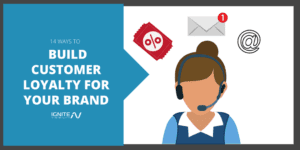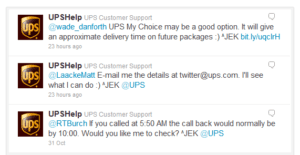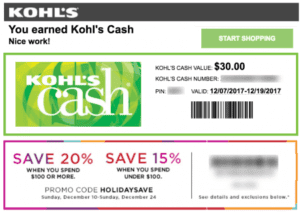It’s a generally accepted principle of marketing that it costs much more to find a new customer than it does to sell to an existing customer. That’s why it’s a great idea to build customer loyalty.
I’ll show you how in this article.

According to Invesp, you’ll spend 5x as much to attract a new customer than to keep an existing one.
That same research shows that only 40% of companies and 30% of agencies have an equal focus on retention and acquisition.
In other words, you can gain a competitive advantage by putting an emphasis on customer loyalty.
Harvard Business Review says that acquiring a new customer can be a whopping 25x more expensive than hanging on to an existing one.
That same report cites a Bain & Company study showing that increasing customer retention rates by as little as 5% can increase profitability as much as 95%.
There’s an old saying: “Make new friends but keep the old. One is silver, the other gold.”
In this article, we’ll go over a few ways that you can hang on to that gold.
-
Practice Outstanding Customer Service
Yes, we have to cover the obvious stuff first.
If you want loyal customers, make sure that your customer service is second to none.
Start by looking at what your competitors are doing in terms of customer service. Then, do it better.
Does your competitor offer free shipping? Offer free, two-day shipping.
That might seem like an expensive investment, but in this Amazon Prime era, it’s likely that all e-commerce shops will soon need to offer free, two-day shipping.
Also, if you want to know if your customer service is up to snuff, ask your customers.
Send out email surveys that give people the opportunity to offer feedback about your brand. Let them tell what they like and where you could improve.
Remember: criticism is your friend.
When customers tell you what’s wrong with your business, that’s a blessing. It’s information you can use to improve your quality of service and make future customers happy.
-
Get to Know Your Customers
You should also get to know your customers.
Why? Because once you understand them, you can improve your quality of service by addressing their specific needs.
Learn about your customers’ pain points. Find out why they buy your product or service.
Then, tailor your marketing message and customer care accordingly.
One of the easiest ways to keep up with your customers is with the aid of a great information system. Use it to collect important info about your customers, such as their reasons for purchasing your product and their demographic details.
Then, you can use reporting tools to aggregate that data and look for trends.
Speaking of tools, you should also have a customer relationship management (CRM) system. As the name implies, a CRM will help you relate to your customers.
There are plenty of great CRMs on the market. The “Rolls Royce” option is unquestionably Salesforce, but prepare to open your wallet if you go that route.
If you’re still bootstrapping, you can look at some more affordable CRM solutions.
Use your CRM system to practice individualized attention. Send out birthday greetings, holiday cards, and monthly newsletters with a personal note.
-
Build Customer Loyalty: Develop a Consistent Brand Personality
Your business probably has a mission statement. But does it have a personality?
You’ll find that it’s easier for people to stick with a brand when they can relate to it.
Why has Progressive Insurance been running commercials with Flo for years? Because she makes the company more relatable.

Customer Loyalty: Build a Signature Brand Voice (Like Flo From Progressive)
Follow that example. Even if you have a boring business model (like insurance), you can still spice it up with a human touch.
Think about how you can add some personality to your brand.
Then, stick with it. Let that brand personality shape your company messaging, marketing, and service going forward.
-
Offer “Prime Service” to Your Best Customers
In business school, you were probably taught that the “prime rate” is the interest rate that banks reserve for their best customers. You should deliver a “prime” quality of service to your best customers.
Find the customers who are contributing most to your bottom line. What can you do to make them even happier?
Here are a few suggestions:
- Give them a dedicated account manager
- Offer extra perks like larger discounts on volume purchases
- Waive restrictions that you put on other customers
- Give them “first dibs” on new products or services you’re offering
- Let them try new offerings for free
- Give them your cell phone number so they can call you directly if there’s a problem
Also, it’s sometimes a good idea to treat your best customers as partners. Ask them for advice before making big decisions that will affect your business.
-
Monitor Social Media and Respond
It’s often the case that people who have a question or complaint will reach out to your business on social media. Please note: they might do that even if you don’t explicitly state that you offer customer support via Twitter and Facebook.

Customer Loyalty: Engage on Social Media
When they do reach out to you on social channels, make sure you respond.
Obviously, that means you’ll have to monitor your social media mentions for feedback. Then, you can address the concern.
Remember: other people (including potential customers) are watching how you respond on social media. Make sure you leave them with a good impression.
-
Build Customer Loyalty: Reach out to Ex-Customers
As we’ve seen, criticism is your friend. That’s why you should contact former customers and ask them why they stopped buying.
Be prepared for some cold, hard, brutal truth.
That’s okay, though. The truth will sometimes cause pain, but it’s a growing pain.
Use that feedback to improve your level of service. That will help you keep the customers you haven’t lost.
-
Give Your Frontline Employees the Ability to Deal With Complaints
You should empower anyone who deals directly with customers to handle complaints themselves. That way, customers don’t have to wait for management approval or for a form to be signed.
You might be worried that if you give your customer-facing employees too much authority, they’ll abuse it and disburse way too many refunds or free exchanges. That’s an understandable sentiment, but unfortunately, refunds and free exchanges are the cost of doing business.
If people aren’t happy, they aren’t happy. It’s your job to make them happy.
Give your employees the ability to make them happy in any way they see fit.
-
Sympathize With Complaining Customers
While we’re on the subject of customer-facing employees, make sure that you train them to always sympathize with customers who complain.
Note: even if the customer is completely wrong about the reason that he or she is complaining, the employee should still sympathize.
Here’s a good response: “I’m sorry you’re having that problem. I’ll be happy to work with you to resolve the issue.”
Above all else, though: listen.
Let the customer vent. Let the customer whine. Let the customer complain.
Then, repeat the relevant facts and let the customer know how you will take care of the problem.
With that kind of engagement, you’re showing a level of care that can turn a complainer into a loyal customer.
-
Become a Master Communicator
One of the best ways to keep customers happy is to set expectations right at the outset.
Tell your customers exactly what level of service is provided. In some cases, it might be necessary to inform them about what kinds of services aren’t provided as well.
Also, tell them about the cost up front. That way, they have a chance to make an informed decision.
It’s also a great idea to follow up with a courtesy email or phone call after they’ve made a purchase. Check to make sure that everything is okay.
Also, comply with all consumer protection laws when you market your product. Ask your attorney if there’s any info that you’re required to disclose.
You’ll alienate customers quickly if they find out you’re breaking the law. Even if you did so unintentionally.
-
Offer Customer Loyalty Programs
Here’s another obvious one: if you want loyal customers, have a customer loyalty program.
You’ve almost certainly seen customer loyalty programs at other businesses. They offer an incentive to frequent shoppers.
One of the best loyalty programs is offered by Kohl’s. It’s one of the best because customers don’t even have to sign up for it.
Here’s how it works: a shopper drops a couple of C-notes on new clothes at the store. During checkout, the cashier gives that shopper a $30 coupon towards their next visit.
The “catch” is that their next visit must happen during the following week. After that, the coupon expires.

Kohl’s Customer Loyalty Program
Customers who have that $30 coupon are incentivized to shop at Kohl’s next week. They’ll probably buy some more clothes and save $30.
Then they get another coupon for the following week. You see where this is going, don’t you?
Think about how you can offer a loyalty program that keeps customers coming back on a regular basis.
Here’s another trick: offer new customers a head start on a loyalty program.
Let’s say you give a free product to a customer who purchases 10 products. When you enroll new customers in the loyalty program, give them credit for three purchases even if they only made one purchase.
That will give them an incentive to score the free product with just 7 more purchases.
-
Reward Outstanding Customer Service
When one of your employees goes above and beyond the call of duty to practice outstanding customer service, reward that behavior.
In fact, you should reward that behavior publicly.
Have a little award ceremony at your place of business. Invite everybody to attend. Heap honor and praise on that individual who delivered more than was required in terms of customer service.
Give the person a trophy and a gift.
When your other employees see that, they’ll realize that you mean business when it comes to customer care. It’s likely that some of them will go the extra mile as well.
-
Offer Payment Plans
Want to make it easy for people to buy your products or services? Offer payment plans.
Marc Compeau tells the story of a wedding service provider that struggled with cash flow. That’s because the wedding service business is seasonal. Most people like to get married in Spring or Summer.
The company decided to offer a payment plan. When people were shopping during Winter, they could sign on with the service and distribute the costs over the next several months.
That helped the business because customers thought that they were paying less when in fact they were paying the same amount over time.
So how did it all work out? Customers were happy, referrals increased, and sales soared 400%.
-
Give Customers the Right Experience
Make sure you and your employees address customers properly every time you communicate with them.
For example, the nature of your business might require you to address people as “Mr.” or “Ms.” In other kinds of businesses, it’s just fine to talk to people on a first-name basis.
Make sure your employees understand all the right protocols when they’re communicating with your customers.
-
Let Customers Know What You’re Doing for Them
If you don’t tell your customers what you’re doing for them, who will?
In your monthly newsletter or email, be sure to brag about your business. Let customers know how your company bends over backward to make people happy.
Include testimonials from satisfied customers. Mention how your product or service has made somebody’s life better.
Don’t worry. You’re not being cocky when you do that. You’re practicing good marketing.
And that kind of marketing will keep customers coming back.
Concluding Customer Loyalty
By following the steps above, you’ll be well on your way to building a solid, loyal customer base.